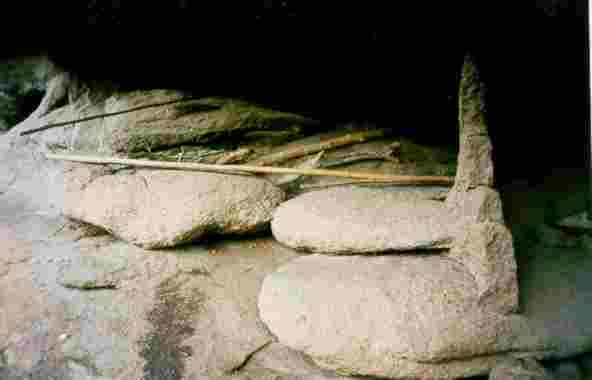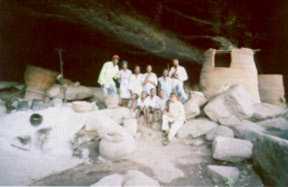|
A local tailor and his family occupy this deep rockshelter
during the week, returning to their village at weekends. Their occupation
provides valuable living insights into many of the practices and material
ephemera employed - most of which would not appear in the archaeological
record.
An ethno-archaeological study of this site, therefore,
should help in making fuller interpretations of rockshelter and cave sites
elsewhere in the world. The main cooking area, pots, baskets, wooden mortar,
sieves, granary (a possible indicator of past savana conditions)
and an oil drum are visible above. |
|






